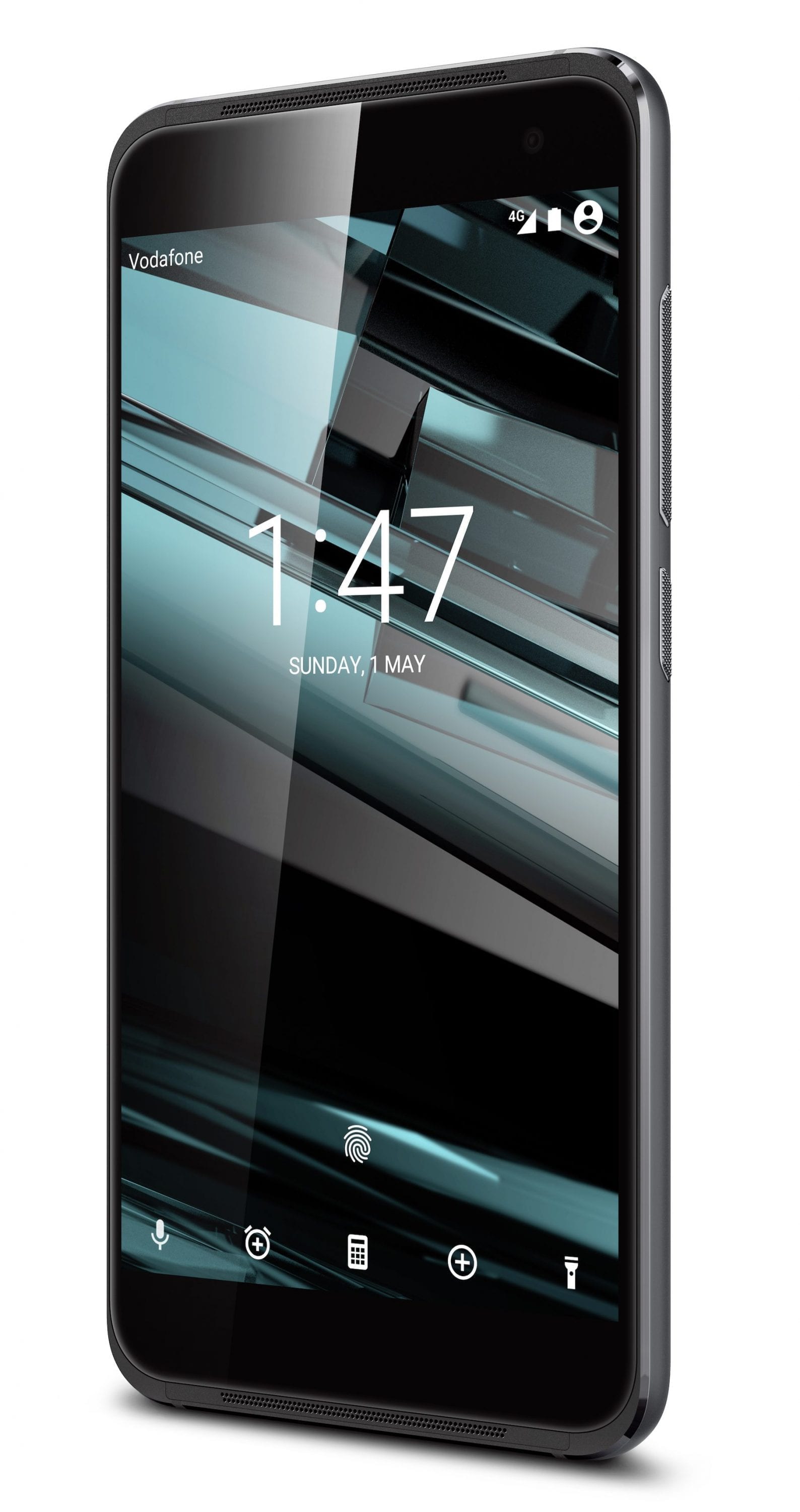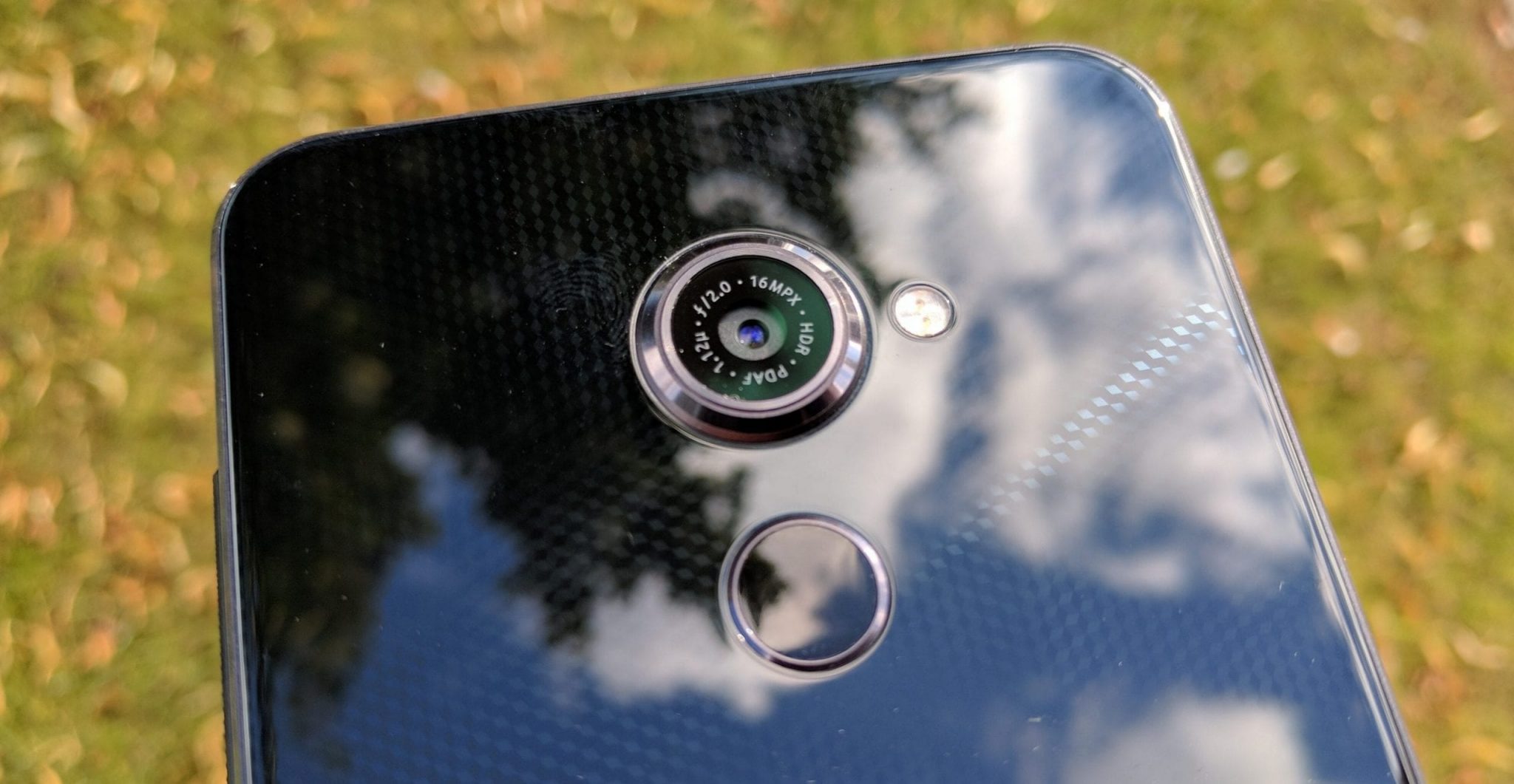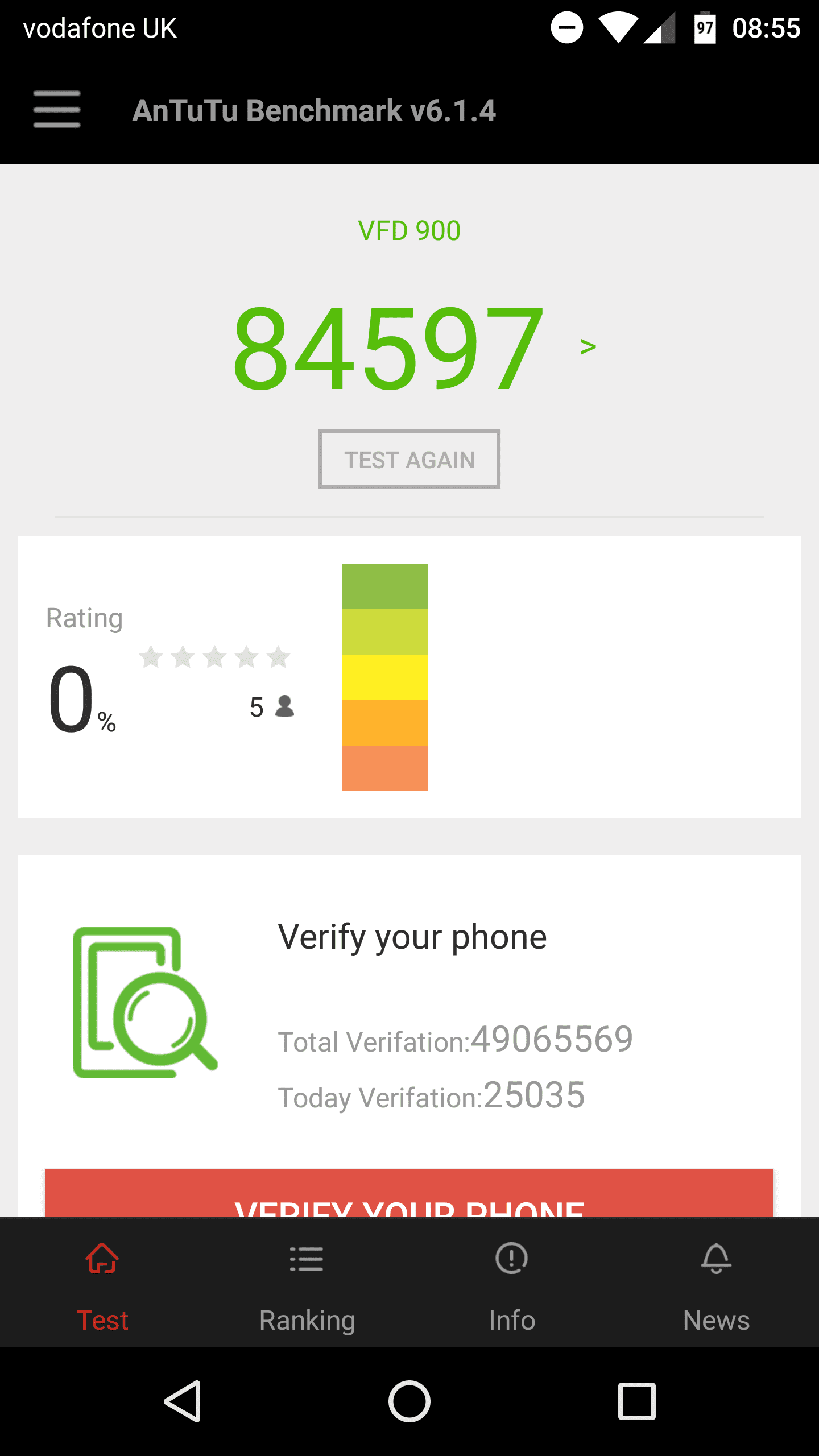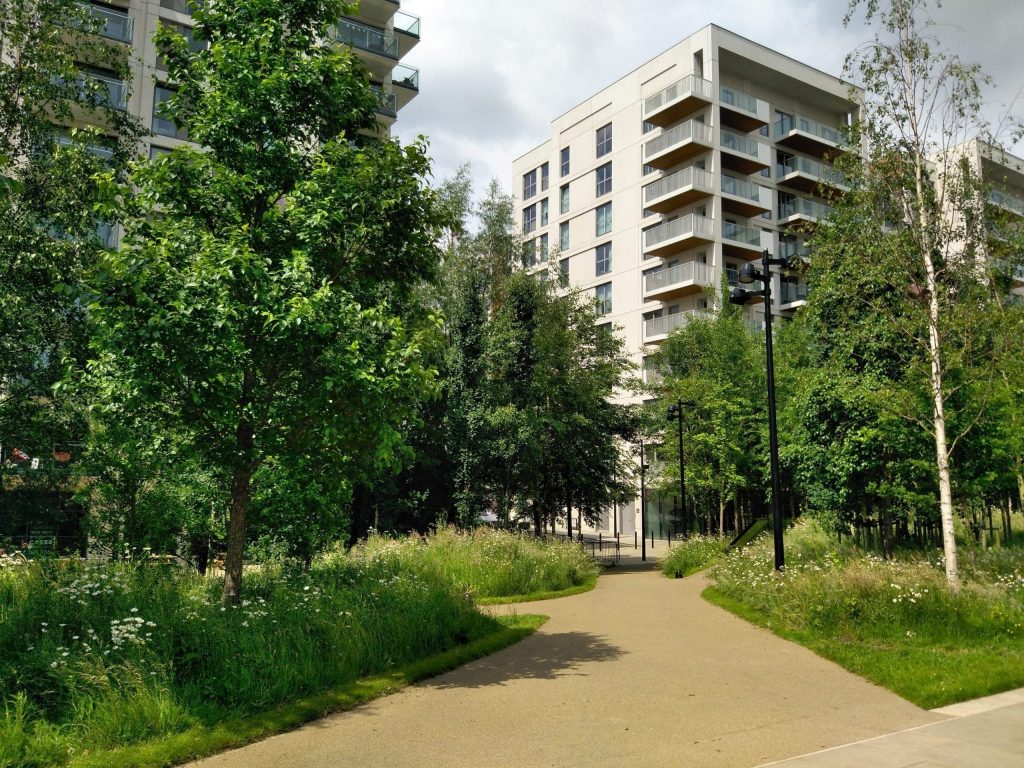
Vodafone Platinum 7 Review: Taking network-branded handsets to a new level
This year, Vodafone decided to go all out with its 2016 range of own-brand handsets. The Platinum 7 comes with a high-definition QHD display, powerful front-facing speakers, and a boat load of processing power, but has the network succeeded in producing something to steer customers away from the big name manufacturers?
 Now, before I proceed, I bet you thought I’d forgotten about the Vodafone Platinum 7 for a moment. Well I haven’t, and neither has Vodafone, which has been pushing this phone in stores since it hit the shelves almost two months ago.
Now, before I proceed, I bet you thought I’d forgotten about the Vodafone Platinum 7 for a moment. Well I haven’t, and neither has Vodafone, which has been pushing this phone in stores since it hit the shelves almost two months ago.
Last year, the flagship Vodafone-branded handset was the Smart Ultra 6. This year, that was replaced with the Smart Ultra 7, which I found less groundbreaking and actually quite disappointing in some areas (namely the camera).
Discovering that some overseas Vodafone network versions actually got a fingerprint sensor within the button was another disappointment.
But where the Ultra 7 is fighting it out at the lower end of the market, along with the Prime 7, and doing a fairly admirable job because of the lower pricing, the Platinum 7 is going after a higher end market.
At a similar price to the OnePlus 3 when it first came out (that has since gone up in price after the pound plunged in value), the phone is entering a new territory for the network, and the good news is that, by and large, it has done what Vodafone set out to achieve.
The glass front and rear instantly makes the phone look classy, although it does mean wiping it regularly becomes an almost daily, if not hourly, ritual. That’s if you’re that fussed, which eventually I decided I wasn’t because, well, life’s too short.
You could always buy a case, if you can find one. That’s always a problem for less mainstream phones. This phone is made by TCL (known by many as Alcatel, as one of its more popular brands) and a variant of an existing phone, the Idol 4S. The problem is that this isn’t exactly commonly available either.
The rear of the phone sports a fingerprint sensor, which is very accurate. However, someone decided to make it near flush to the rest of the glass. It means you’ll often struggle to find it, reducing the convenience (and speed) of using your finger to unlock the phone in a fraction of a second.
Camera
The camera on the Ultra 7 wasn’t great, and while the Platinum 7 bumps up the pixels from 13-megapixels to 16, and uses a thicker sensor that protrudes from the rear, the images are still not as good as I hoped, or expected.

Upon closer inspection, there’s the same washed out look on images that used to afflict Sony Xperia Z models from the Z1 through to the Z3+. That means photos are fine to look at on the phone screen (especially on the vivid AMOLED QHD display), but not really up to much when you start to zoom in.
I am getting quite bored of saying this on so many reviews, and will excuse you for getting bored of reading it too. If a manufacturer is assuming most people will be happy with photos because they only look at them on the phone, or on social media (which usually reduces the image size and compresses heavily) then it’s probably wiser to reduce the pixel count and go for a better sensor at a lower resolution instead.
Perhaps these days few people zoom in and the problem is not the big deal I keep making it, but I still judge a camera on its all-round performance. The Nexus 6P takes photos that can stand up to scrutiny, and the Huawei P9 with its dual-sensor arrangement can also capture photos with great detail and excellent contrast – each having only 12-megapixels to play with.
The video recording function is good, and slow-motion videos can be exported to a file that retains the slow motion segments so you can share with others (or upload to YouTube), rather than being something you can only enjoy on the phone itself.
The front facing camera also comes with its own flash, which does make a difference, and overall the camera isn’t bad – but nor is not stand-out amazing either. These days, there are many phones with better cameras out there and Vodafone should bear this in mind when seeking out a replacement next year.
Performance
I know that some people can’t bear to believe that someone else owns a phone that’s faster than theirs. The latest Exynos 8890 and Snapdragon 820/821 chipsets is where things are currently at, so surely something with ‘only’ Snapdragon 652 can’t be any good?
 Well, after disappointing experiences with Snapdragon 615-617 phones, I’d have probably been the first to echo that view, but that view quickly changes when you get to experience Qualcomm’s new Snapdragon 652 SoC, an octo-core chipset comprising four 1.8 GHz Cortex-A72 cores, and four 1.2 GHz Cortex-A53 cores.
Well, after disappointing experiences with Snapdragon 615-617 phones, I’d have probably been the first to echo that view, but that view quickly changes when you get to experience Qualcomm’s new Snapdragon 652 SoC, an octo-core chipset comprising four 1.8 GHz Cortex-A72 cores, and four 1.2 GHz Cortex-A53 cores.
It almost takes on last year’s Snapdragon 810 SoC, only with a little less heat in the process – which means less throttling and a more stable overall performance. Oh, and less impact on the battery.
All things considered, this phone flies. It’s not Nexus 6P speed. It’s not G5, Galaxy S7 or Note 7 speed either, but I’d challenge you to use any of those alongside this and notice a real difference.
Strong memories
3GB of RAM, 32GB of internal storage and a memory card slot makes this a good all-round offering that will not disappoint in the performance department.
The wonderful 5.5-inch Quad-HD AMOLED screen could be seen as the icing on the cake, but perhaps the best thing is the thing you can’t see from any photos. And that’s the quality of the sound output from the twin speakers, fitted top and bottom and pointing directly at your face.
Front-facing speakers should be standard on all phones, or at least anything that has a screen that encourages you to sit on the couch and watch a film instead of turning on the TV. We all do it, right? After all, you can take your phone with you as you move around the house.
Decent speakers, with punchy bass, not only makes film watching more pleasurable, but it also works great for listening to the radio or music.
The speakers on the Platinum 7 are very loud. So loud in fact that I even recorded a short video of the phone outside a pub on a busy road. Boy could you create mischief on public transport with this thing (don’t).
Day to day Experience
Having had the Platinum 7 in my possession for some time, I really got a good chance to test out how it fared day-to-day. By supporting 4G+, I enjoyed good speeds on Vodafone’s network in places where it has rolled out 2600MHz, or even switched 3G 2100MHz to 4G.
Coverage is improving on a weekly basis, and the Cat 6 phone supports speeds of up to 300Mbps down and 50Mbps up.
The 3,000mAh battery also never got me too worried, even with such a large and bright display. It was hard to get the phone hot in normal use, and so it was easy to get a full day of usage from it.
Charging the battery is via a micro-USB port rather than USB-C, and it is in an offset position that’s the other side to the Ultra 7. I am not sure why TCL couldn’t manage to put the port in the middle on either phone, and one day I would love to find out.
The phone supports Qualcomm’s Quick Charge 3.0 fast charging system, which is another great addition.
Verdict
The key concern on the Platinum 7 is the camera. It’s average. But the screen and audio quality excels. Battery life is good (with fast charging when required) and a great performance that is up there with the flagships of late 2015 and early 2016.
At £300, it will probably make it less of an impulse buy that a sub-£150 phones can encourage. The nearest competitor is the (now more expensive) OnePlus Three. That will beat this in the overall performance department, along with even faster charging.
But the OnePlus Three only comes with a 1080×1920 pixel screen resolution and no front-facing speakers. Nor is there any memory expandability, although you do get 6GB of RAM versus the 3GB here. In my opinion, 3GB is more than Android needs, and 6GB is overkill. Maybe that will change in the future, but for now it’s more about playing the numbers game than bringing major benefits.
So, all things considered, the Platinum 7 is a very decent phone. It’s around half the price of many other flagships, but of course means you’ll need to sign up to Vodafone to be able to get one – unless you get it unlocked.
Hopefully Vodafone will now continue to release phones of this calibre in the future, and other networks might decide to give it a go instead of going only for the cheaper end of the market.
Platinum 7 Camera Images
Vodafone Smart Ultra 7 vs Smart Platinum 7

I much prefer the Platinum 7 to the Smart Ultra 7, but of course there’s a significant price premium on the former (as in it is more than twice the price), which perhaps makes it almost an invalid comparison. The upside is that Vodafone now has a number of phones to suit all budgets, and while the Platinum 7 stands out, as you’d expect, the cheaper models all have positive features for their respective price points.
More info: Vodafone website











































